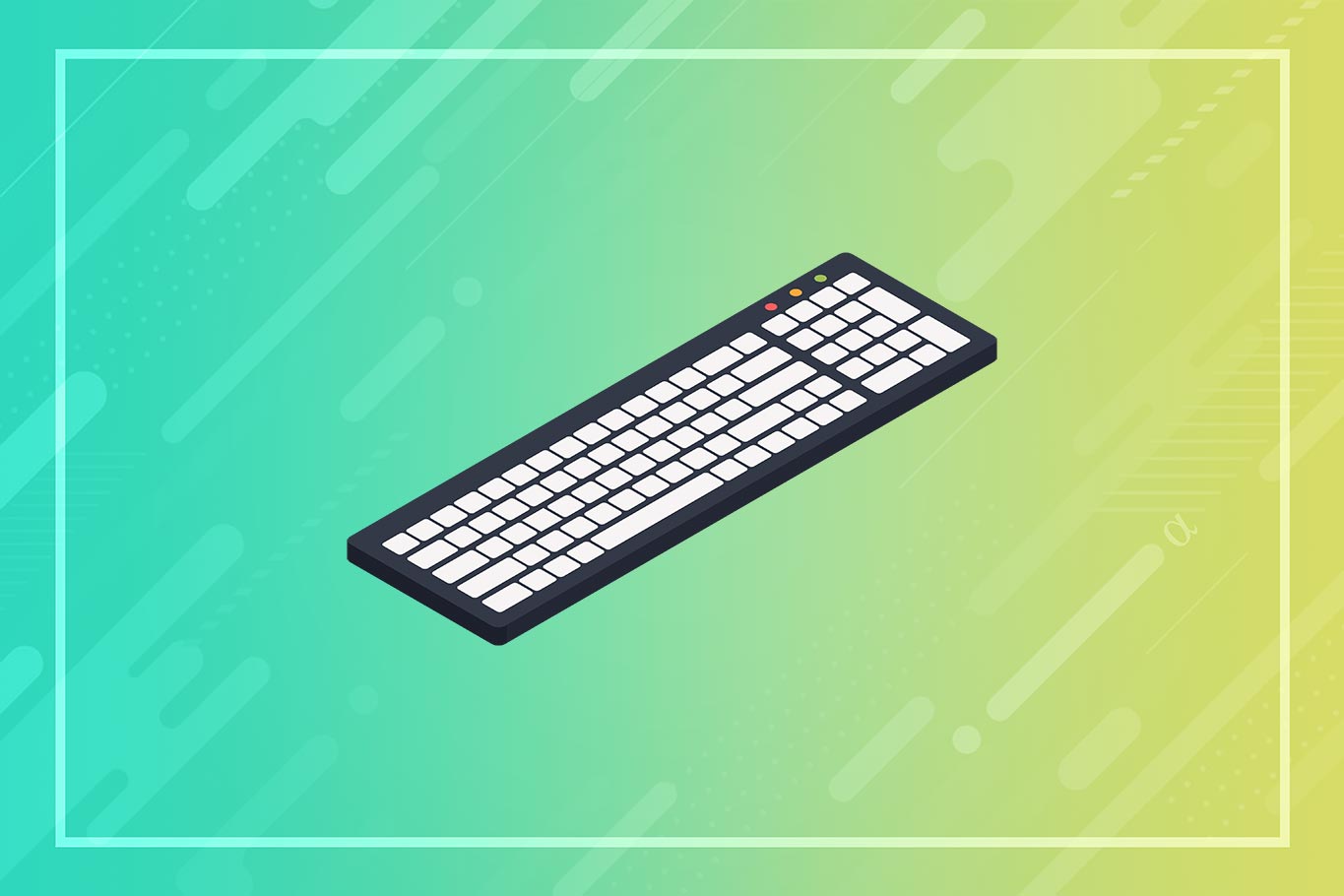The best keyboard for coding is a tool that turns a long, finger-wrecking coding session into a thought-provoking, pleasing tactile experience that your fingers will actually enjoy. The ergonomic design and soft keys will keep your fingers and wrist pain-free, no matter how many hours you’re stuck debugging your apps.
By turning an average coding session into a premium typing experience, these incredible input tools will help you make the most out of every working hour in the day. You’ll never worry about sore fingers or wrist pain again, allowing you to focus on problem-solving and creating magnificent applications for your projects.
The Best Keyboards for Coding
The best keyboards for coding all share a common trait: outstanding ergonomic design. These keyboards combine a comfortable, intuitive layout that keeps your arms at shoulder width, a built-in wrist rest, and soft keys that deliver a fantastic tactile experience. This non-negotiable feature is what primarily boosts productivity and long-term comfort.
Other factors include wireless capabilities, built-in macro, and media buttons, and fully customizable key switches that stay silent in work environments. The best keyboards for coding is a nuanced topic since many are limited by space or coworkers that heavily dislike how, for instance, mechanical keyboards sound. Others are forced to work on a limited work surface, requiring users to adopt a smaller Tenkeyless keyboard that adjusts to their space.
Today, we’ve considered all of these factors and created an all-star selection of keyboards that will make your journey as a programmer that much easier. After reviewing over 92+ models, we guarantee there’s something for everyone on this shortlist!
Best Keyboard for Programming
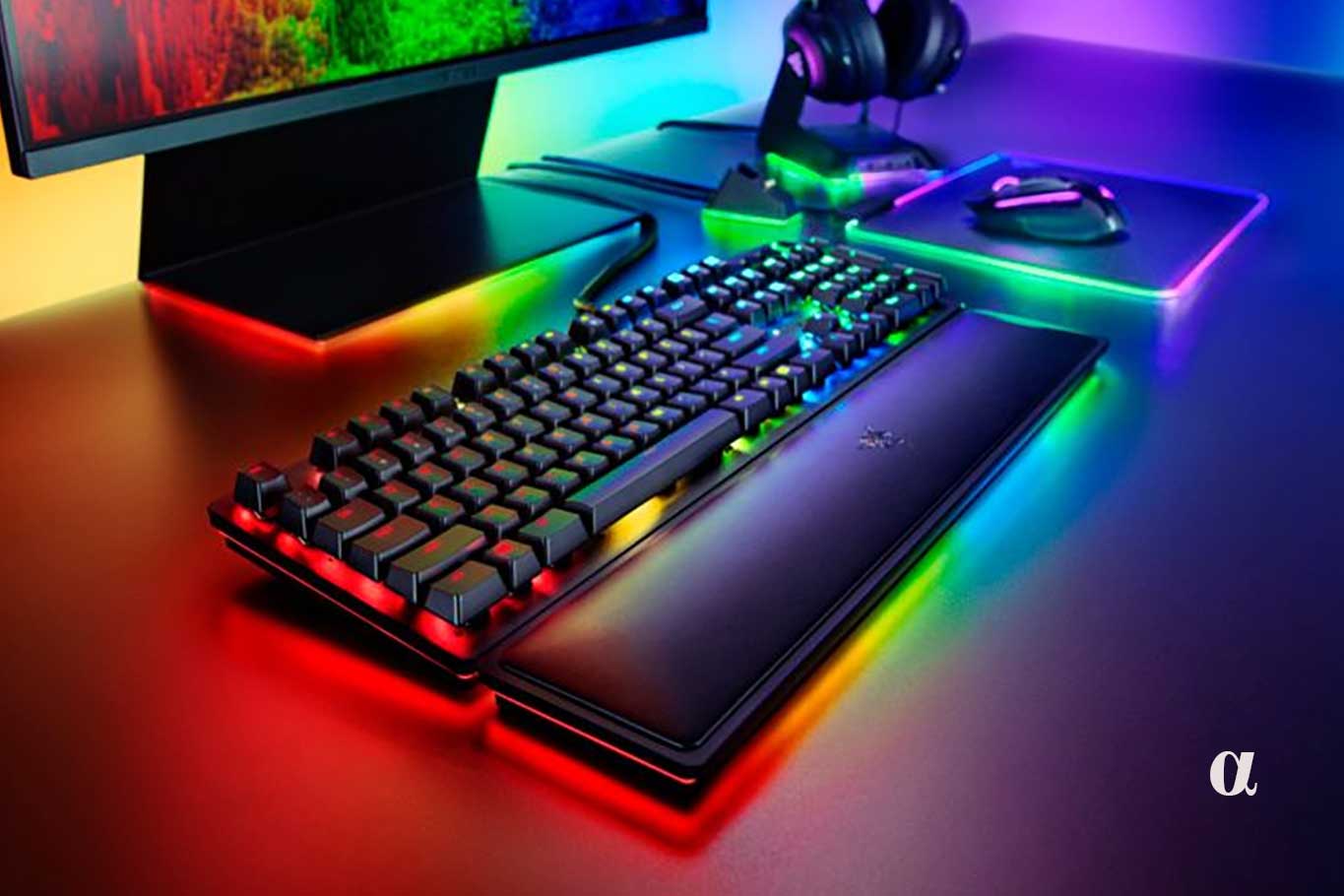
The Huntsman Elite by Razer is, without question, the best keyboard for programming. This techy peripheral features customizable Razer Optical switches, which (literally) register key presses at the speed of light with a light actuation force of 40g. You can also customize every aspect of your sensory experience by choosing between a standard Clicky switch or a quiet Linear switch. The standard mechanical switch offers that unmistakable click-clack and satisfying key push many know and love. A linear switch, on the other hand, offers a membrane feel on each key press and a much quieter experience that perfectly adjusts to work environments.
While the Huntsman is the best keyboard for programming, it’s also one of the best Razer keyboards ever released. The brand is known for its top-notch gaming peripherals, so you can easily use its ergonomic, magnetic wrist rest to play online games for hours on end. This Razer model truly offers an outstanding ergonomic design and superb tactile feel, regardless of your switch choice.
This Razer keyboard is also surprisingly durable, with each key supporting 100 million clicks, vastly outshining most of its competitors in terms of overall durability. Pair that with a 2-year manufacturer warranty, and you’re guaranteed to enjoy the best keyboard for programming for quite a few years.
The G915 Logitech Ergonomic Keyboard
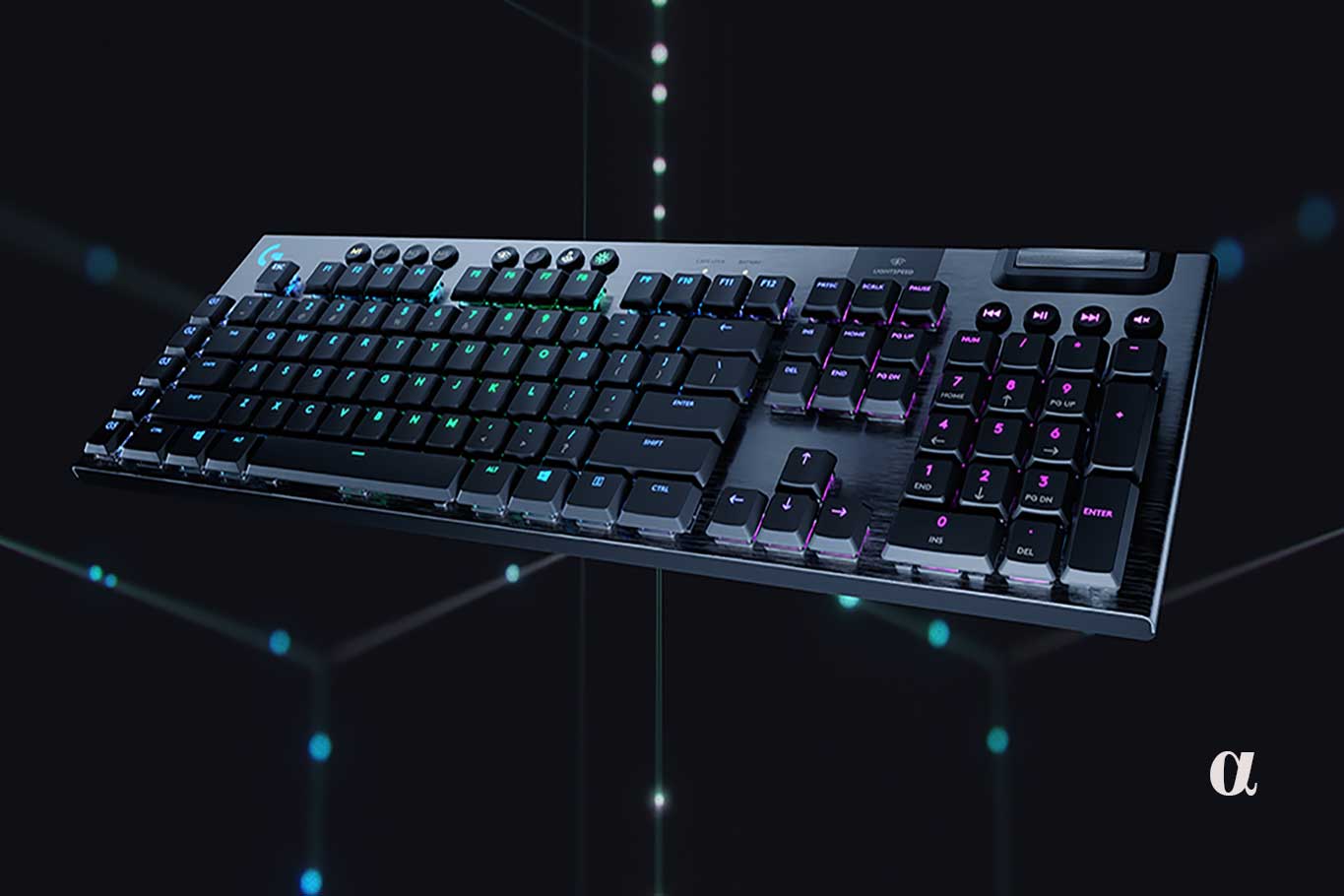
The G915 is our favorite Logitech ergonomic keyboard due to its low-profile and incredibly thin design. This Logitech ergonomic keyboard offers 3 selections of low-profile mechanical switches so you can fully customize your typing experience: the GL Clicky, GL Tactile, and GL Linear switches.
The GL Clicky is similar to a classical mechanical keyboard in terms of its audible click, while the GL Tactile offers a gentle bump for some tactile feedback at a lower sound level. On the other hand, the GL Linear offers an entirely smooth keystroke with little to no sound, so if you’re not a fan of a mechanical keyboard’s signature click-clack, you might want to switch to a linear switch. That being said, all the switches and keys are incredibly responsive and soft, which is perfect for drawn-out debugging sessions and low-decibel work environments.
This gorgeous keyboard comes with the brand’s signature Lightspeed and Bluetooth technology to offer a high-performance wireless connection for users that prefer wireless keyboards for their workstation or office. Together with its air-craft grade aluminum alloy build, this wireless keyboard is, by far, one of the most durable and portable designs in the market, which is perfect for computer science students that wish to pack their peripherals to campus.
Microsoft Sculpt Ergonomic Keyboard
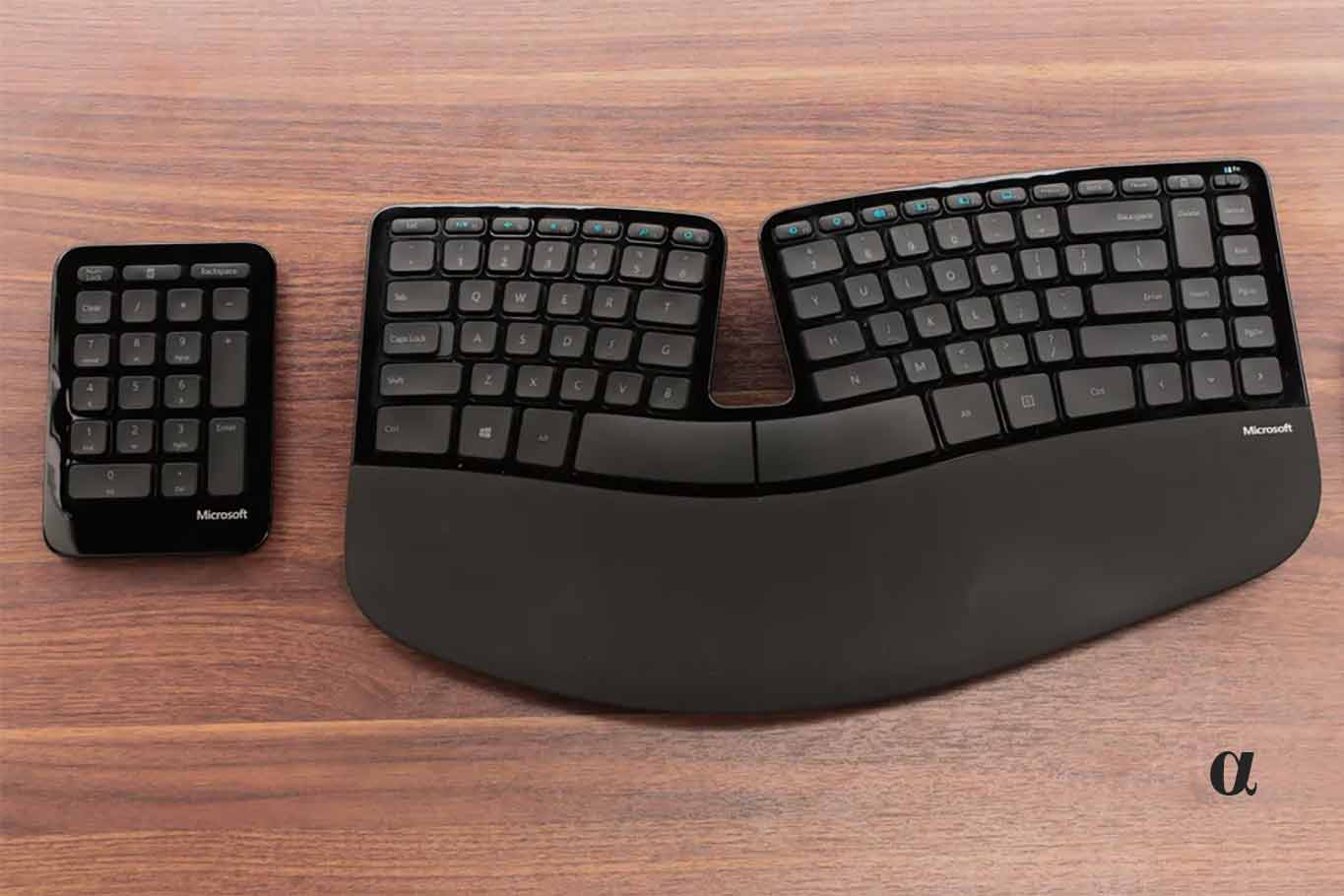
The Microsoft sculpt ergonomic keyboard features an incredibly bold and futuristic design that prioritizes ergonomic comfort above all. The Microsoft sculpt ergonomic keyboard features a split keyset design that allows you to naturally position your wrists and forearms in a relaxed position. The keys, in their revolutionary split layout, mimic the curved shape of your fingertips so your entire upper frame, from back to fingers, intuitively adapts to your peripheral.
While the Microsoft Sculpt ergonomic keyboard presents a fantastic design that addresses long-term ailments (such as carpal tunnel and chronic aches), it also requires the user to adapt to its layout over time. Many coders find it challenging to adapt to the domed keyboard design and its separate number pad, reporting that it makes typos a problem during the first week or two. Still, its long-term benefits vastly outweigh this potential, short-lived inconvenience. This keyboard also comes with limited out-of-the-box MacOS support, requiring you to use tools such as Karabiner and Keyboard Maestro to get the most out of this fantastic keyboard.
The Epomaker TKL Keyboards
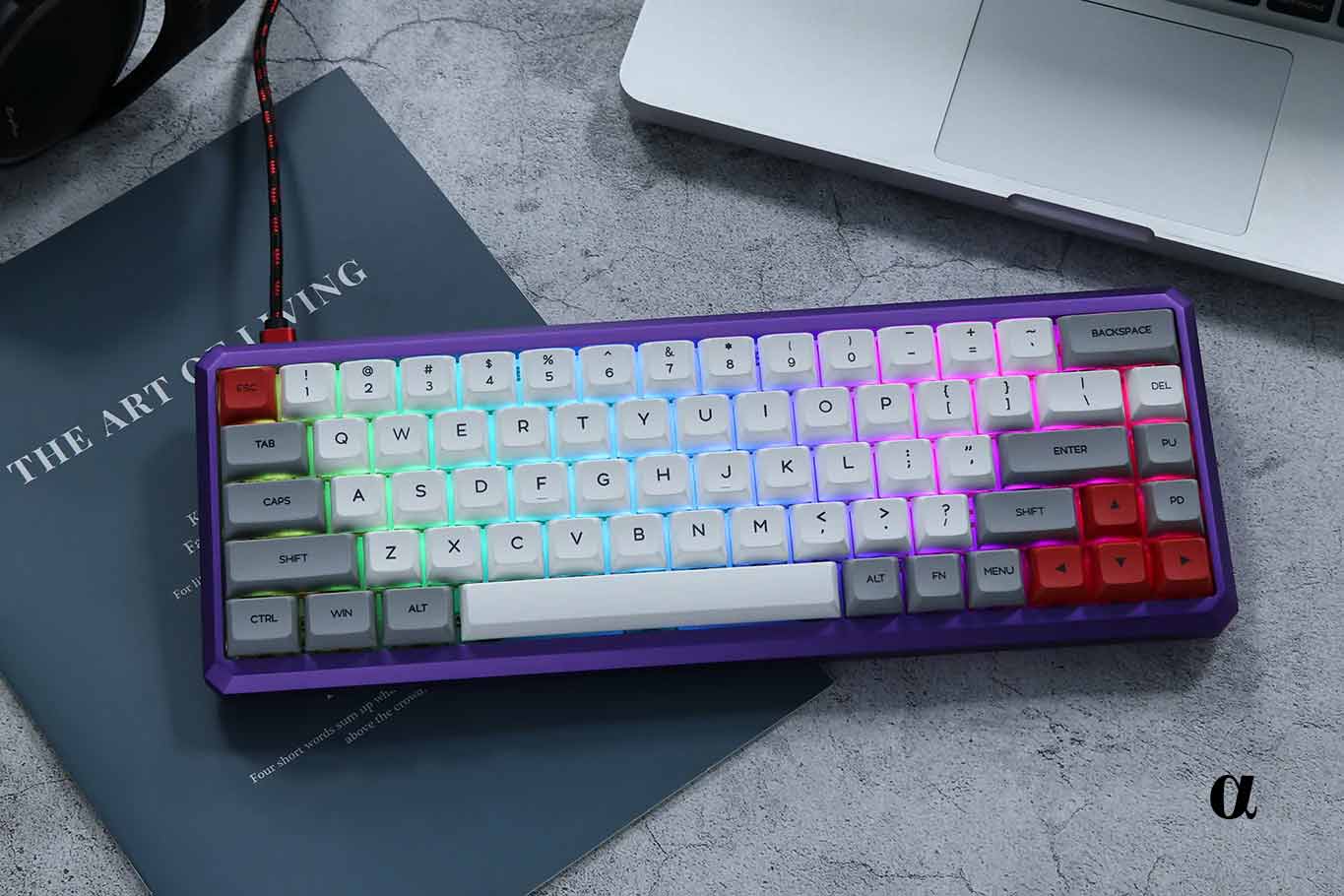
This TKL Keyboard by Epomaker is a fully customizable, ergonomic keyboard that blew our minds. The GK68XS results from years of feedback from keyboard communities and enthusiasts worldwide that banded together to create the best keyboard for coding out there. Tenkeyless keyboards are notorious for their portable design that adapts to reduced work surfaces and campus studying rooms, making them a popular choice amongst workers and students alike. Their convenient design and careful attention to feedback allowed the brand to create an extraordinary product.
The GK68XS is one of the best TKL keyboards because it comes with a hot-swappable design, allowing you to easily change your mechanical switches for quieter alternatives without any soldering. You can try out different switches and enjoy a bespoke tactile experience that will help you power through drawn-out coding sessions.
You can also choose between its wired and wireless versions and pair up to three devices simultaneously to maximize productivity, thanks to its dual connectivity modes and Bluetooth 5.1 technology. This outstanding TKL keyboard is also compatible with Windows and Mac, which is perfect for computer science students who need to dabble with multiple operating systems. The design itself is full of convenience and features next-level ergonomic comfort on every keystroke, making it one of our favorite TLK keyboards, and one of the best keyboards for coding out there.
Microsoft Ergonomic Keyboard: The Natural
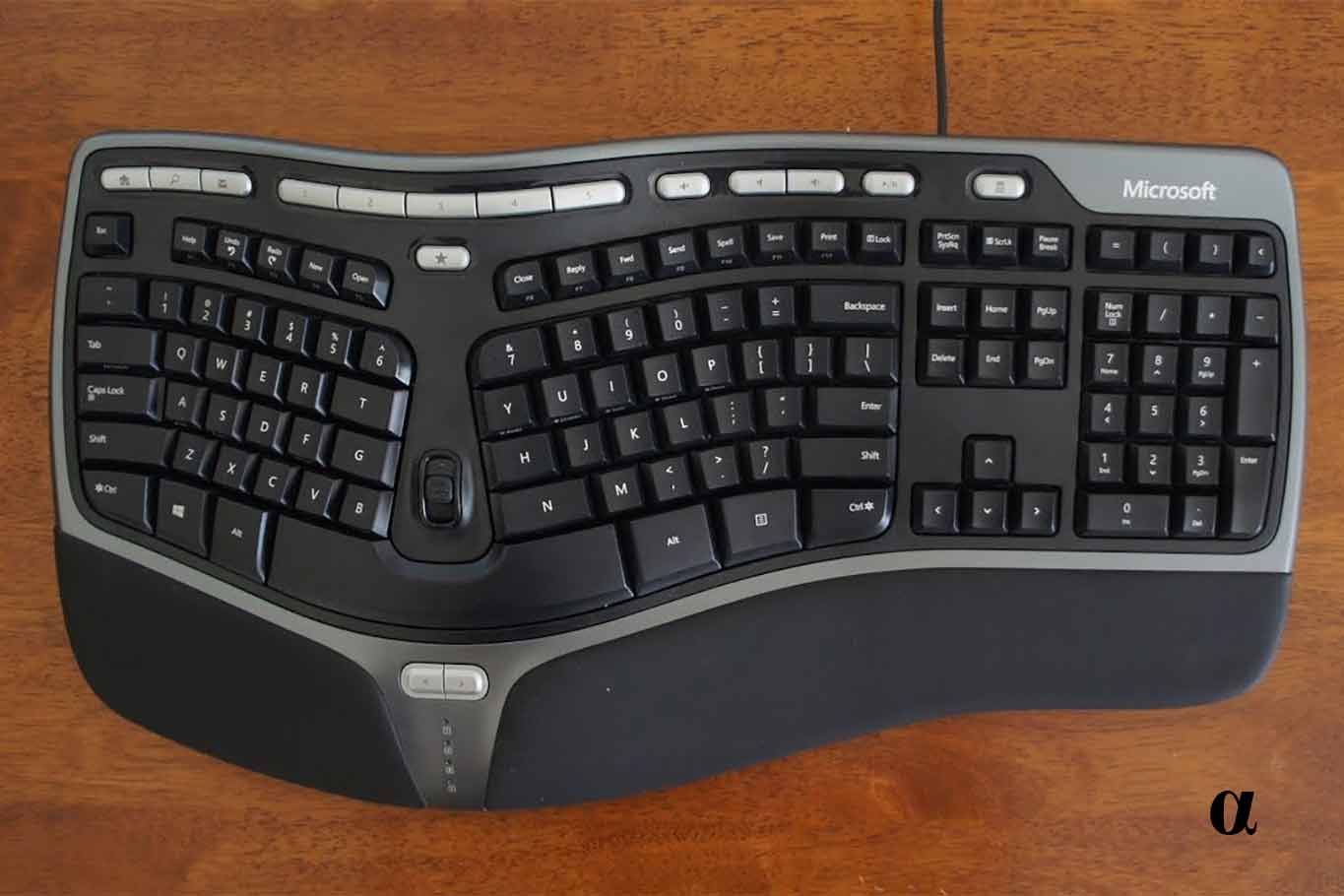
The Natural is one of our favorite Microsoft ergonomic keyboard, considered by many as the brand’s Sculpted model predecessor. This Microsoft ergonomic keyboard features a split ergonomic design that intuitively adapts to your natural hand, wrist, and forearm positions. The padded palm rest, coupled with the palm lift, work together to promote that neutral wrist position that prevents long-term ailments, such as carpal tunnel.
This Microsoft ergonomic keyboard also comes with a wide variety of customizable buttons, such as media keys, taskbar favorites, email and internet hotkeys, and much more. The only issue with best-sellers and brand classics is that they tend to be outdated software-wise, which could cause compatibility issues with Mac devices. It’s still widely regarded as one of the best keyboards for coding because it presents no compatibility issues with Linux and Windows. Because of its fantastic ergonomic design, it had to be part of our selection.
The Keychron K4 Wireless Mechanical Keyboard
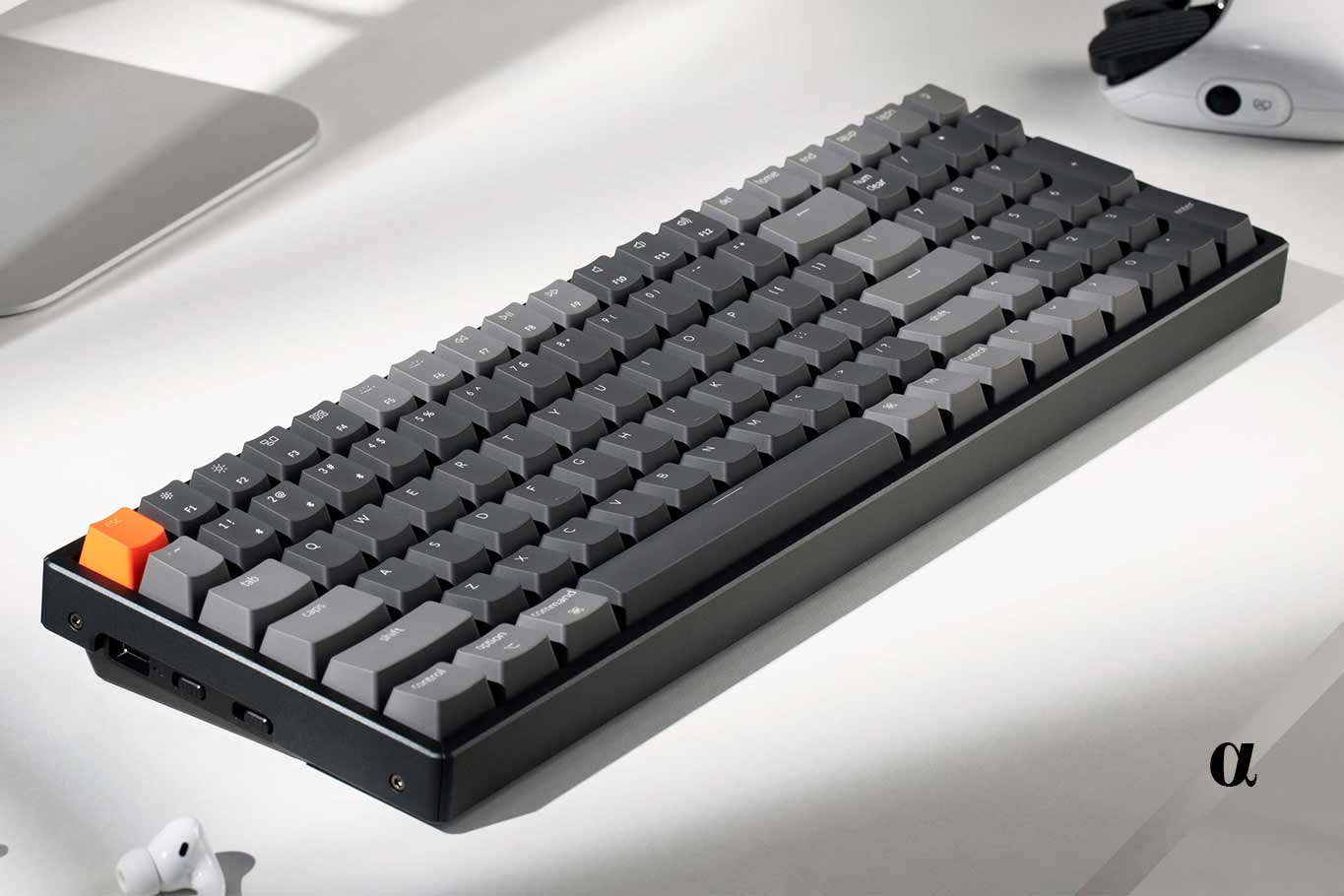
The Keychron K4 is a top-of-the-line wireless mechanical keyboard for programmers, copywriters, and those that regularly use their Numpad keys. The K4 has a compact design that favors minimalist workspaces with enough room for a full-sized keyboard, offering an impressive +300 feet indoor range through its Bluetooth 5.1 technology.
You can pair the k4 wireless mechanical keyboard to three devices simultaneously, regardless if they’re Windows or Mac products. Thanks to its compact design, detachable USB type-C cable, and Bluetooth capability, this practical Keychron model is exceptionally portable and versatile. You’ll be able to carry it on your favorite laptop backpack without taking too much space and use it on tablets, laptops, smartphones, and PCs alike.
Thanks to its high-quality battery, this wireless mechanical keyboard offers up to 72 hours of continued typing: This means you don’t need to charge it more than twice during busy weeks, even if you strictly use a Bluetooth connection.
The best part of the Keychron wireless mechanical keyboard is its hot-swappable mechanical switches, which fully adapt to your preferences. You’ll enjoy a super smooth and satisfying typing experience by choosing blue, brown, or red switches to favor deep, halfway bump, or clicky keystrokes. Although it’s a matter of personal taste, we recommend using a k4 wireless mechanical keyboard with brown, tactile switches, so your fingers do less work on every press!
The IQUNIX A80 Bluetooth Mechanical Keyboard
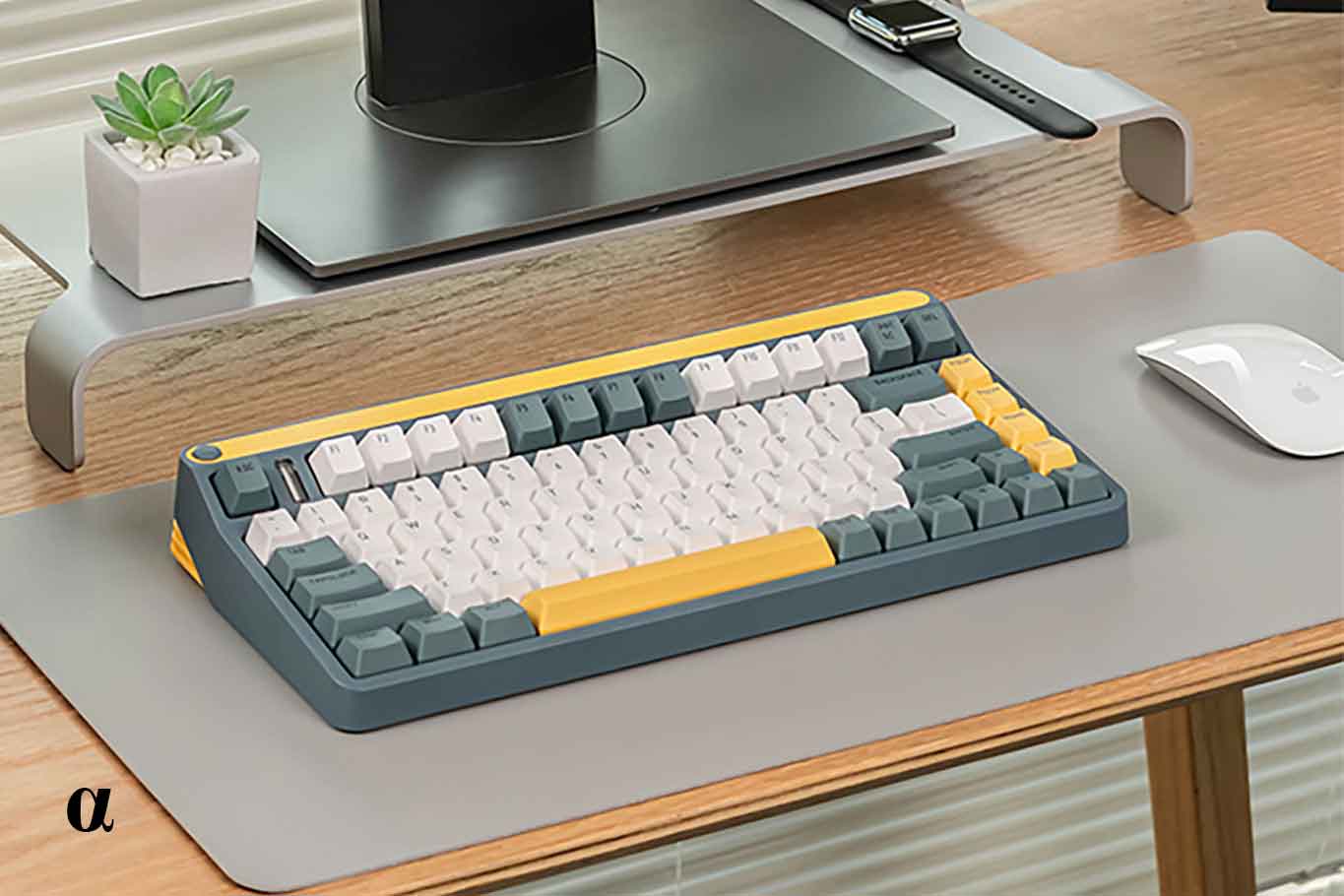
The IQUNIX A80 Bluetooth mechanical keyboard perfectly blends retro aesthetics and modern quality of life tech features. The A80 is perfect for first-time mechanical keyboard users due to its hot-swap capability and easy-to-use puller tool, letting you try all sorts of switches without investing in several keyboard models.
This Bluetooth mechanical keyboard is compatible with Gateron, Cherry, and TTC-type switches, coming in brown, red, blue, silver, gold, or pink colors. However, if you’ve never typed with Cherry keys before, we recommend giving the red type a try for an insanely smooth and consistent key-pressing experience.
The A80 Bluetooth mechanical keyboard feels natural and comfortable, even without a palm rest! Thanks to IQUINIX’s slightly inclined design, the A80 sticks to typing ergonomic standards, but you always get the option of adapting its natural angle with two sets of tilt feet. This thoughtful design allows you to adapt the keyboard depth and overall feel, so it better suits your natural posture.
The best Bluetooth mechanical keyboards are known for offering excellent battery life and precision at a distance. The A80 checks both these boxes by offering 200-day autonomy before recharging (while only using Bluetooth) or 60 days of continuous use when connected through its 2.4 GHz dongle. This stylish Bluetooth mechanical keyboard also has built-in dynamic RGB effects that light up your workspace with an impressive range of colors.
FAQ
Mechanical vs Non-Mechanical Keyboards
Non-Mechanical keyboards are generally known as traditional keyboards and are generic by design. These peripherals offer membraned or rubber dome keys, supported by a gel-like base that feels mushy whenever you press them. This built-in elasticity significantly reduces your typing noises, making traditional keyboards the preferred option in shared work spaces.
On the other hand, Mechanical Keyboards use individual physical switches underneath each key. Despite being louder than non-mechanical keyboards, their design allows for smoother key activations and faster input since it’s easier for your devices to detect keystrokes given the key’s pressure precision.
Unlike their traditional counterparts, mechanical keyboards also allow for lots of customization. Keycaps of different heights can be placed at different rows throughout the keyboard to produce curved, ergonomic profiles that better adapt to their users’ preferred wrist angle. Furthermore, mechanical switches can be swapped individually to produce different key-pressing experiences. Red linear switches feel smooth down to the keystroke, while brown tactile switches produce a slight, responsive “bump” midway through the press. Lastly, blue clicky switches offer a responsive bump midway through the press with an added click noise.
Ergonomic vs Not Ergonomic Keyboards
Mechanical and Traditional keyboards can be ergonomic keyboards. It’s just a matter of design. Any keyboard built to minimize muscle strain and fatigue and reinforce proper typing postures is considered an ergonomic keyboard.
Customizable mechanical keyboards that fit your natural hands, wrist, and overall posture can be the ultimate way to prevent or mitigate carpal tunnel syndrome. For instance, a low-profile mechanical keyboard can significantly minimize the pressure from raising your hands and reduce the wrist pain associated with carpal tunnel. Switches with different heights can lessen your hand’s stretching throughout prolonged typing sessions, while keycaps with different sensitivities can further reduce the pressure required to activate each key.
Compact vs Full Keyboard Layouts
Compact keyboards, or “tenkeyless” (TLK), are designed without a Numpad to their right side. The term tenkeyless means that they only feature a 1 to 10 row of keys on top of the qwerty array, significantly reducing the amount of space occupied on work surfaces.
While TLK keyboards favor minimalist work setups, some offer attachable num pads to better meet their user’s needs. Full keyboards, on the other hand, offer a convenient Numpad that allows users to tackle math-intensive tasks, boosting overall productivity over time.
Wired vs. Wireless Keyboards
Wired keyboards have the reassuring advantage of eliminating even the slightest input lag, wireless interference, and battery-life limitations. However, wired keyboards add clutter, risk entangling other devices’ cables, and lack mobility within your workspace without appropriate cable management.
On the other hand, wireless keyboards are the ideal choice for clutter-free, minimalist spaces. By no longer needing a cable connection, wireless keyboards can be repositioned at any moment to make room for other devices or simply be used at a longer distance whenever the situation calls for it.
Many computer science students forgo their laptop’s built-in keyboard in favor of a highly portable wireless keyboard. The traditional layout and key distribution can significantly boost productivity, especially when it’s been ergonomically designed to prevent finger fatigue.
Review
Coding is perceived as a complex career path, and understandably so: it combines problem-solving skills and creative thinking like few other professions and trades do. Having the best keyboards for coding will not help you search and create these solutions in record time, but they’ll also keep your fingers and wrists safe from carpal tunnel and finger fatigue.
These models also offer plenty of macro keys and shortcuts to streamline your everyday tasks and work, saving you considerable time over the years. This combination of convenience, comfort, and many quality of life improvements make these models the best keyboards for coding this year.



















